Guillermo A. Morales, Barry A. Bunin (Eds.)
Table of contents :
26.pdf……Page 0
Introduction……Page 8
Standards and Flow Monitoring……Page 11
LC Conditions……Page 13
An Efficient Rerun Protocol……Page 15
Evaluation of Representative Library Compounds……Page 17
Library Analysis……Page 19
Comparison of the Eight-Channel LC/UV/MS (MUX-LCT) System with a Conventional Single-Channel LC/UV/MS System……Page 23
Data Acquisition Using Positive and Negative Ionization……Page 24
Conclusion……Page 25
Acknowledgments……Page 26
Introduction……Page 27
General Experimental Procedures……Page 28
Aliphatic Amines……Page 31
Thiols……Page 37
Aldehydes……Page 38
Conclusions and Summary……Page 39
Acknowledgments……Page 41
Introduction……Page 42
Benzodiazepines……Page 46
Purines……Page 48
Quinazolines……Page 50
Arylaminobenzimidazoles……Page 54
Pyridin-2-ones……Page 56
Oxazoles……Page 57
Hydantoin/Isoxazolines……Page 59
Perhydro-1,4-diazepine-2,5-diones……Page 61
Carbohydrates……Page 63
Functionalized Peptide Libraries……Page 66
Cyclic Peptides……Page 67
Amines……Page 70
Ureas and Their Chalogen Analogs……Page 74
Future Perspectives……Page 75
Addendum……Page 77
Introduction……Page 78
Principle……Page 79
Equipment……Page 80
Piperazine Carboxamide Libraries……Page 82
Combining Directed Sorting with Parallel Synthesis-Benzothiazepine Library……Page 89
General Information……Page 93
Acylation with Carboxylic Acids to Produce 10 or 11 or 20……Page 96
Removal of Alloc Protecting Group from Resin 10 or 19……Page 97
Preparation of Resin 16 from Symmetrical Diamines……Page 98
Cysteine Carbamate Resin 26……Page 99
Cyclization to Benzothiazepine 30……Page 100
Archiving, Cleaving, and Free Basing of Resin 33……Page 101
Reaction with TFP Resin to Prepare 36……Page 102
Introduction……Page 103
Principle……Page 104
String Synthesis: Support Units and Strings……Page 105
Manual Device for Redistribution……Page 106
Redistribution Pattern……Page 108
Software……Page 111
Synthesis of a Library of 125 Tripeptides……Page 113
Cleavage……Page 114
Product Distribution……Page 115
Acknowledgments……Page 116
Introduction……Page 117
Directed Split-and-Pool Method……Page 119
Encoding……Page 120
Process Integration/Automation……Page 121
Description of the Encore Method……Page 122
Magazine……Page 124
Lantern Leveling Tool……Page 125
Synthetic Protocol……Page 126
Conclusion……Page 129
Introduction……Page 130
Triazenes as Linkers……Page 132
Traceless Linkers……Page 135
Multifunctional Cleavage……Page 138
Concept for Heterocycle Synthesis……Page 139
Triazene T2 Linker……Page 143
Summary and Conclusion……Page 148
Representative Procedure for the Synthesis of Triazene T1 Resins……Page 150
Preparation of Diazonium Salt 56 on the Resin……Page 151
Automated Preparation of Amides……Page 152
Acknowledgments……Page 153
Background……Page 154
Synthesis of Polymeric TFP……Page 157
Synthesis of TFP-Activated Resins……Page 158
Quality Control of TFP-Activated Resins……Page 159
Reaction of TFP Reagents with N-Nucleophiles……Page 161
Preparation of TFP Resin (Scheme 1)……Page 164
Preparation of TFP-Activated Sulfonic Acid Esters (Scheme 2)……Page 165
Amine Derivatization with TFP-Activated Esters……Page 166
Background……Page 167
Development of the Traceless Route……Page 168
Library Rehearsal……Page 172
Final Improved Reaction Route……Page 173
General Procedure for Coupling of o-Fluoro/Chloro-Nitroarenes……Page 176
Preparation of Resin 7……Page 177
Background……Page 178
Perfluoroalkylsulfonyl (PFS) Linker/Resin……Page 179
Cleavage of the Resin-Bound Phenols Using the Suzuki Coupling Reaction……Page 180
Cleavage of the Resin-Bound Phenols Using Catalytic Reductive Elimination……Page 181
Cleavage of the Resin-Bound Phenols Using Catalytic Amination……Page 182
Conclusion……Page 183
General Procedure for Cleavage of Phenols Using the Suzuki Coupling Reaction: Preparation of Resins 15-17 and Compounds 1……Page 184
General Procedure for Cleavage of Phenols by a Reductive Elimination Reaction: Preparation of Compounds 20 and 22……Page 185
Introduction……Page 186
Methodology for the Use of the Protected Aromatic Scaffold 16……Page 191
Methodology for the Use of Dpr(Phoc) Linker……Page 193
Use of AmAbz Building Blocks in the Solid-Phase Synthesis of Peptidomimetics: The Typical Example of Heptapeptide 1925……Page 195
Preparation and Use of Dpr(Phoc) Linker……Page 196
Fmoc Protocol……Page 198
Introduction……Page 199
Previous Dihydropyrimidine Libraries……Page 202
Microwave-Assisted Organic Synthesis……Page 204
Microwave-Assisted Biginelli Reactions……Page 206
Microwave Chemistry Utilizing the Emrys Synthesizer……Page 207
Synthesis Criteria for Dihydropyrimidine Library……Page 208
Reaction Optimization in the Emrys Synthesizer……Page 209
Step 1: Choice of Solvent……Page 210
Step 2: Selection of Catalyst……Page 211
Step 3: Optimization of Time and Temperature……Page 212
Step 4: Optimization for Troublesome Building Blocks……Page 213
Automated Sequential Library Production……Page 214
Concluding Remarks……Page 218
Microwave Irradiation Experiments……Page 219
Spectral Data for DHPM Library……Page 220
Introduction……Page 226
Instrumentation……Page 227
Solid-Phase Biaryloxazolidinones……Page 228
Coupling of Iodoaryloxazolidinone to BAL Resin……Page 233
Cleavage of Biaryloxazolidinone from the Solid Support……Page 234
Background……Page 235
Overview……Page 237
Detailed Description……Page 238
State of the Art……Page 243
Materials and Methods……Page 244
F-Tag Protocols……Page 248
Introduction……Page 249
Solid-Phase Oligosaccharide Synthesis (SPOS)……Page 251
Combinatorial Solid-Phase Oligosaccharide Synthesis (CSPOS)……Page 258
Conclusion……Page 266
Acknowledgments……Page 268
Introduction……Page 269
General Synthetic Procedures for Encoded Peptidomimetic and Small Molecule Libraries……Page 274
On-Bead Screening of Encoded Peptidomimetic and Small Molecule Libraries……Page 275
Synthesis of an Encoded Peptidomimetic Library, an Example……Page 276
Screening of an Encoded Peptidomimetic Library with Streptavidin-Alkaline Phosphatase Conjugate……Page 282
Acknowledgments……Page 285
Introduction……Page 286
Background……Page 287
Exploration of Antimicrobial Peptides Using Combinatorial Chemistry……Page 290
Design Strategies in Combinatorial Libraries of Peptides……Page 291
Cyclization……Page 293
Hinges in Peptide Libraries……Page 294
Conclusion……Page 295
Introduction……Page 296
Synthesis of Linear and Cyclic Peptide Libraries……Page 298
Preparation of the Amino Acid Solutions……Page 299
Monitor Coupling Reaction……Page 300
Synthesis of a Linear Heptapeptide Library with 19 Eukaryotic Amino Acids (Cysteine Excluded)……Page 301
Synthesis of a Disulfide Cyclic Peptide Library……Page 302
On-Resin Synthesis of a Cyclic Peptide Library Using Lys and Glu Side-Chains……Page 304
The Synthesis of “Fluorescence-Quench” Combinatorial Library for Protease Substrate Determination……Page 305
Library Screening……Page 306
Enzyme-Linked Colorimetric Assay……Page 307
Whole Cell Binding Assay……Page 310
Screening for Protease Substrates……Page 312
Protein Kinase Substrate Assay……Page 313
Microsequencing of Peptide Beads……Page 315
Acknowledgments……Page 320
Background……Page 321
Mixture-Based Combinatorial Libraries……Page 323
Development of Antifungal Agents Using the PS-SCL Approach……Page 324
Screening of a PS-SCL for Antifungal Activity……Page 326
Deconvolution Process……Page 329
Development of Antibacterial Agents Using the PS-SCL Approach……Page 330
Development of HIV-1 Antagonists Using the SCL Approach……Page 331
Determination of Inhibition of HIV-1 Mediated Fusion……Page 333
Inhibition of HIV-1 Replication……Page 334
Novel Strategies toward the Development of Vaccines against Infectious Diseases……Page 336
Identification of Epitope Mimics……Page 337
Identification of Natural Epitopes in Protein Databases……Page 340
Conclusions……Page 342
Acknowledgments……Page 343
Introduction……Page 344
Acids and Bases……Page 346
Synthesis of Dihydropyrimidones (Entry 5)……Page 347
Oxidations and Reductions……Page 348
Synthesis of Carboxylic Acids (Entry 8)……Page 349
Sulfur and Phosphorous Transfer Reagents……Page 350
Carbon Transfers……Page 351
Synthesis of Olefins via Wittig Reaction (Entry 17)……Page 352
Electrophilic Reagents and Radical Reaction Reagents……Page 353
Supported Transition Metal Catalysts……Page 354
Synthesis of Arylamines (Entry 24)……Page 356
Esterification and Amide-Coupling Reagents……Page 357
Group Transfer Reagents……Page 359
Synthesis of Guanidines (Entry 33)……Page 360
Scavengers……Page 361
Scavenging of Phosphines and Phosphinoxides (Entry 34)……Page 362
Multistep Synthesis Using Polymer-Supported Reagents……Page 363
Introduction: Current Challenges in Combinatorial Chemistry Research……Page 364
Polymer-Assisted Solution Phase (PASP) Synthesis……Page 365
Example 1: Oxidizing Polymers……Page 368
Oxidations with Immobilized Oxoammonium Salts……Page 369
Protocol for Oxidations Employing Oxoammonium Resins22……Page 371
Oxidations with Immobilized Periodinanes27……Page 374
Protocol for Oxidation with and Reactivation of Polymer-Supported Periodinane26……Page 375
Example 2. Alkylating Polymers38……Page 377
Protocol for the Alkylation of Carboxylic Acids by Use of Alkylating Resins37……Page 379
Example 3. Polymer-Supported Carbanion Equivalents……Page 380
Example 4. Radical Release from Polymer Gels42……Page 382
Example 5. Optimization of the Polymer Support: Highly Loading Resins for Polymer-Supported Reagents44……Page 385
Conclusions……Page 388
Introduction……Page 389
Scavenger Resins Synthetic Applications……Page 397
Resin Preparation……Page 406
Solid-Phase Assisted Solution-Phase Synthesis……Page 408
Introduction……Page 411
Nitrogen Nucleophile Attacking sp2 or sp3 Carbon: Five-Membered Ring Formation……Page 412
Nitrogen Nucleophile Attacking sp2 Carbonyl: Six-Membered Ring Formation……Page 415
Nitrogen Nucleophile Attacking sp2 Carbonyl: Seven-Membered and Larger Ring Formation……Page 420
Oxygen Nucleophiles……Page 421
Carbon Nucleophiles……Page 423
Organometallic Reactions……Page 424
“Reverse” Cyclative Cleavage……Page 426
Reagents and General Methods……Page 428
Acknowledgments……Page 430
Introduction……Page 431
Nucleophilic Aromatic Displacements……Page 434
Palladium-Catalyzed Reactions……Page 445
Acylations, Alkylations, Reductive Alkylations (Aminations, Alkaminations)……Page 447
Name Reactions……Page 451
Conclusion……Page 453
Substitution of Remaining Chloro Group with Amines via Non-Palladium-Catalyzed Amination Reaction with KOtBu as Base (Fig. 2)15……Page 454
Cleavage of 4-Amino-6-chloro-2-methanesulfenyl Pyridine from (9) (Fig. 3)12……Page 455
Displacement of Methanesulfinyl (11b) or Methanesulfonyl (11c) Groups (Fig. 3)12……Page 456
Polymer-Bound Triazine Attached via a Thiol Linker (20) (Fig. 4)14……Page 457
Preparation of Amino-Substituted Quinazoline (45) and Cleavage from the Resin to Obtain the 2-Unsubstituted 4-Arylaminoquinaz……Page 458
Facilitated Arylations via Iron-pi Complex……Page 459
Derivatization of Dichloroheterocyclic Scaffolds (Fig. 10)15……Page 461
Stille Coupling on Support-Bound Compounds 67 (Fig. 11)33……Page 462
Acylations, Alkylations, Reductive Alkylations (Aminations, Alkaminations)……Page 463
Introduction……Page 466
UDC (Ugi/De-Boc/Cyclize) Methodology……Page 467
TMSN3 Modified Ugi Reactions……Page 479
Postcondensation Passerini Reactions……Page 481
TMSN3-Modified Passerini Reaction……Page 483
Automation……Page 484
Conclusion……Page 486
Typical Experimental Procedure (Plate Production)……Page 487
Typical Experimental Procedure (Scale Up)……Page 488
Diketopiperazines (50)……Page 489
Azepine-tetrazoles (94)……Page 490
Ketopiperazine Tetrazoles (96)……Page 491
Tetrazole-nor-statine Mimetics (110)……Page 492
Introduction……Page 494
Resin Mixtures……Page 497
Reagent Mixtures……Page 498
Libraries from Libraries: Generation of Peptidomimetic Libraries……Page 499
Chemistry Optimization……Page 500
Solid-Phase Synthesis of Heterocyclic Compounds from Resin-Bound Amino Acids, Short Peptides, and Polyamines……Page 501
Solid-Phase Synthesis of Bis-Heterocyclic Compounds from Resin-Bound Acylated and Nonacylated Polyamines……Page 508
Parallel Synthesis of Combinatorial Libraries……Page 509
General Requirements for the Synthesis……Page 511
Coupling of Fmoc Amino Acids to Introduce the Second Position of Diversity……Page 512
Parallel Synthesis of Heterocyclic Libraries 47 to 51……Page 513
Conclusion……Page 514
Introduction……Page 516
Sequential Nucleophilic Substitutions on Insoluble Supports……Page 518
2,3-Dichloropropionic Acid Derivatives as Polyelectrophile……Page 520
4,5-Difluoro-2-nitrobenzamides as Polyelectrophile……Page 521
Conclusion……Page 523
2-Phenylsulfanyl-3-(piperidin-1-yl)propionic Acid Trifluoroacetate……Page 524
1-[5-Benzenesulfonyl-2-(piperidin-1-yl)-4-(pyridin-4-ylmethylamino)benzoyl]piperazine Trifluoroacetate……Page 525
Acknowledgments……Page 526
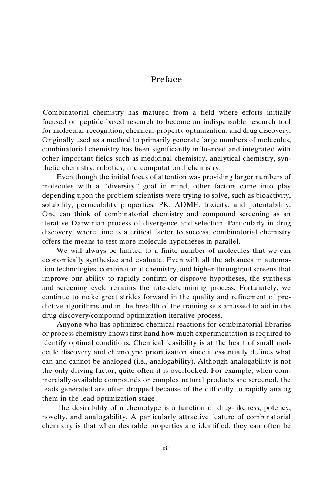


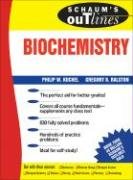
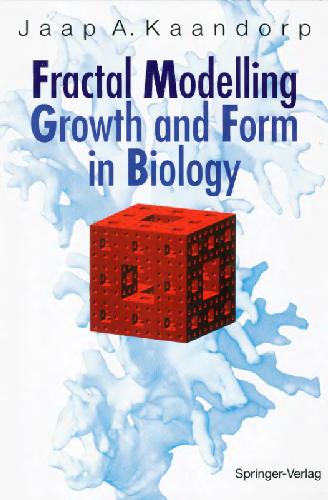
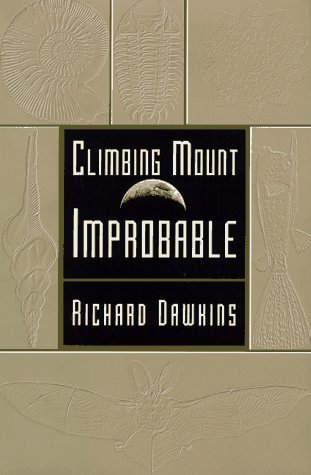
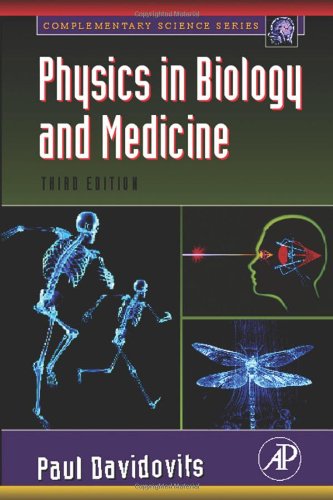
Reviews
There are no reviews yet.